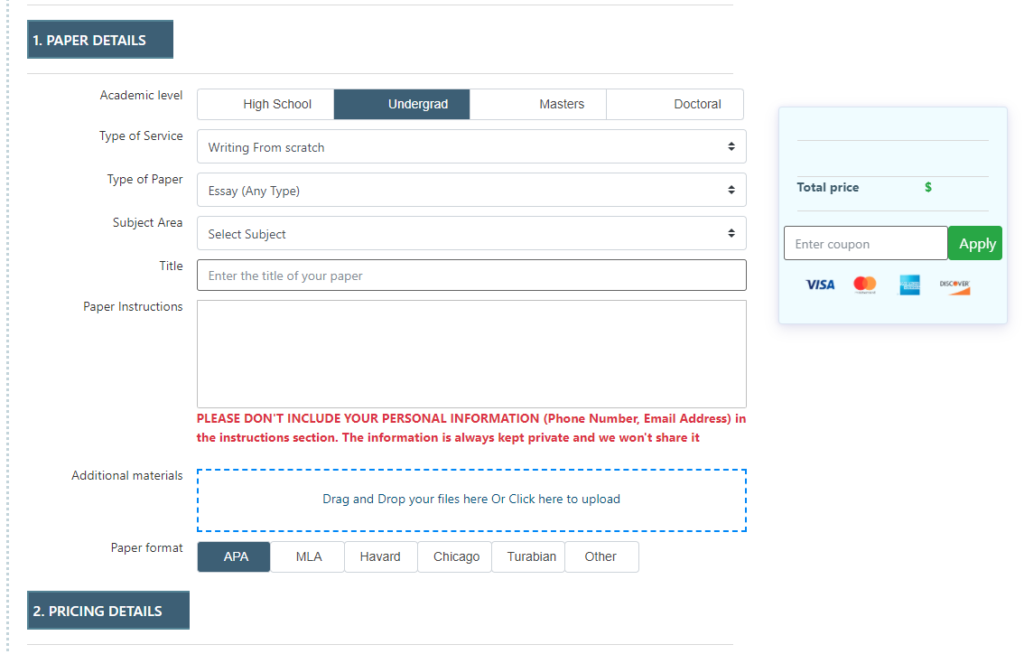University of Phoenix Material
Decision Tree
This required Portfolio assignment will give you experience observing and interacting with people outside of the classroom. It has been designed to provide you with the opportunity to develop skills, synthesize knowledge, and integrate learning in a real world setting. This assignment accomplishes that goal by challenging you to:
€¢ Identify resources that are available in your home community
€¢ Contact individuals in your community who serve as early responders in emergency or crisis situations
€¢ Create a Decision Tree tool that could be used in times of crisis to respond efficiently to a specific emergency situation
The purpose of this assignment is to provide you with the knowledge necessary for creating a Decision Tree linking community resources during emergencies and in times of crisis. Decision Trees are used to quickly identify the resources available in your community and to establish a protocol for contacting these resources when making decisions and referrals on behalf of clients.
Human service workers need to know who to contact and what protocols to follow in case of emergencies (ICE). When working with the public, workers often encounter a variety of circumstances where interventions on behalf of clients become necessary and need to happen quickly. The Decision Tree should help in quickly answering the question of what to do next.
Below is a list of potential services, organizations, agencies, and contacts that may be available in your community. Also consider that you may need to contact family, schools, churches, and other resources that seem reasonable at the time.
€¢ Domestic Violence Hotline/Shelter
€¢ Rape Crisis Hotline/Shelter
€¢ Special Needs shelters
€¢ Pet friendly shelters
€¢ Crisis Team/Facility € mental health
€¢ Crisis Team/Facility € substance abuse
€¢ Child Protective Services
€¢ Emergency Medical Evaluation Team
€¢ Emergency Transportation
€¢ Adult/Elderly Protective Services
€¢ Suicide hotline
€¢ WICK € baby formula provider
€¢ Emergency Pharmacy
€¢ Food Bank/Pantry
€¢ First Responders € Police, Fire, Medical € (Ambulance, FACT Team,)
€¢ Disaster Preparedness Department/Hotline
€¢ Storm Management
€¢ Humane Society
€¢ Translation agencies/volunteer translators
€¢ Guardian Advocates
€¢ Victim Advocates
€¢ Red Cross
€¢ Salvation Army
€¢ Meals on Wheels
Create a Decision Tree in an Excel format or using Microsoft SmartArt (see example on last page). This project is designed for practical application. The Decision Tree can be used in real-life situations and should be designed so that it can be used for various service interventions.In aIDition to your Decision Tree, include the contact information for each site and documentation of your interviews.
You will conduct a study of the community resources for the field of Human Services. If you are majoring in a different discipline (i.e., I/O or Criminal Justice) you may choose to create a Decision Tree according to your discipline of study.
Step 1: Identify a potential crisis or emergency where you would have to intervene on behalf of a client. For example, a client tells you that she is afraid to go home due to abuse she has been suffering in the home.
Step 2: Identify organizations, shelters, social service agencies, and first responders in your community that could be potential referral sources for this situation.
Step 3: Identify the contact person or department for each of these resources. Be sure to include phone numbers, emails, faxes, and aIDresses for each.
Step 4: Contact in person or by phone each resource on your list and ask the questions below. Be sure to document each response. Document any important aIDitional information you glean during your information-gathering calls or visits. Be sure to document all of your attempts to reach each agency and organization.
€¢ What is the best way to access the organization€„¢s services?
€¢ Is this the best number to call?
€¢ What are the extents of the services offered?
€¢ What are the criteria for clients to receive these services? Who is eligible?
€¢ How does the organization provide continuity of care to clients? What aIDitional services will be available or offered to clients once they become involved with this organization?
€¢ Will you be able to have contact with your clients once they are involved with this service/organization?
€¢ What is the organization€„¢s policy on client follow-up?
€¢ What role do you or your agency play in responding to emergencies?
Step 5: Once you have made contact with at least seven resources, organize a chart of these resources in a hierarchal order so that you will best be able to respond to the emergency situation that you are investigating. You will have to develop a plan of action and put the first step you need to take at the top with each of the next steps in order of how you would carry out the plan of action. You should have at least three tiers of contacts in your Decision Tree.
Step 6: Documentation € be sure to include a place on your spreadsheet or graph where you can include any required follow€up documentation and notes. You may also put this information in a separate document.
This chart is an example (may not be included in the actual exercise). Excel or SmartArt can be used €“ using Word >Insert>SmartArt Graphics
Discussion 1
As societies become more diverse, health care organizations will have to adapt to increasing diversity among patients. What challenges will increasing diversity bring? What solutions would you recommend in order to aIDress these problems? How can health care organizations adapt in order to provide quality health care and satisfactory outcomes for all patients, regardless of background?
Discussion 2
1. Compare and contrast the wet adiabatic lapse rate with the dry adiabatic lapse rate.
2. When do you use the dry adiabatic lapse rate as opposed to the wet adiabatic lapse rate?
Student Responses
A well-functioning healthcare system is essential to the publics health. An efficient system that works in concert with organized public efforts and leaves adequate financial resources to invest in programs directed at the health of the entire population is a key goal. The population health approach thus needs to pay attention considerable attention to the working of the public and private healthcare system, as well as that of the public health system. (Riegelman, Public Health 101 ).
Canada has a three tier healthcare system, and the UK healthcare system which has a two tier system. . In the UK, there is the National Health Service, the free, government run one. However, there is also a private system €“ which individuals pay for , but many believe you get better, and faster, service. Sort of like the difference between a public school, and a exclusive private one. On the hand, Canada has just the one system. It is universal, which means everyone has the same access €“ rich or poor. If the street person shows up at the hospital before the billionaire (or his illness/injury is more serious), he is seen first. Money cannot get you anywhere in the Canadian system, it is the same for all (Sherice Jackson). Agree or Disagree
It seem to me that every country but the United States have some kind of affordable health care system. These health care systems seem to all have the same idea in which they provide health care reguardless if a person could pay or not. Most European countries seem to have the same basis for their health care system where as the government regulates and budgets the system. According to the videos posted on the Baltimore Chronicle video compilation from cable news, countries like the Netherlands, Great Britian, and several other northern countries in Europe have this health care system that is more affordable than that of the United States. Also their doctors are not paid as must. I like that the Japanese health system is low cost to citizens, the same health care, and the same prices and fees across the board for all the citizens. I would prefer to have the Japanese health care system. They cost half of what American pay and at times you don€™t need an appointment and child under 15 are free in Tokyo ( Kiara Crider). Agree or Disagree
I cannot imagine that that many agencies could always play nice with each other on a regular basis. The sheer amount of people employed in the NIH, FDA, and CDC is staggering, not to mention that the agencies have different focuses and interests, except for the good of the American people. The NIH focuses on research, the CDC focuses on getting public health information to the people through all levels of government, and the FDA is the last step towards protecting the public from the researched drugs from the NIH that are promoted by the CDC (Riegelman, 183-184). During times of emergencies like the SARS epidemic in 2003, the agencies can pull together, but collaboration between these agencies does need to be an everyday condition (Riegelman, 186) Linda Swancer. Agree or Disagree
Coordination between agencies are not always the easiest to do because of many limitations and roles. Coordination among public health agencies has been a major challenge that is built into our local, state, and federal system of governance. (Riegelman 186) In recent years, collaborations have become stronger ,and happen more smoothly. When organizations come together it is due to an emergency situation. They need to work fast and cover as much populations as possible. For example the SARS epidemic. Coordinations are also happening on a global level. (Riegelman 186). Agencies do not always work together because they all have different jobs to do ,and different missions to have a positive effect on public health (Melanie Romano). Agree or Disagree
The blood tests that are usually ordered to diagnose anemias are: hematocrit, hemoglobin, reticulocyte, MCV, MCHC. Hemoglobin is a protein in your red blood cells that carries oxygen to your body€™s organs and tissues and transports carbon dioxide from your organs and tissues back to your lungs.
If a hemoglobin test reveals that your hemoglobin level is lower than normal, it means you have a low red blood cell count (anemia). Anemia can have many different causes, including vitamin deficiencies, bleeding and chronic diseases. (1)
A reticulocyte count is a blood test that measures how fast red blood cells called reticulocytes are made by the bone marrow and released into the blood. Reticulocytes are in the blood for about 2 days before developing into mature red blood cells. Normally, about 1% to 2% of the red blood cells in the blood are reticulocytes. (2)
The reticulocyte count rises when there is a lot of blood loss or in certain diseases in which red blood cells are destroyed prematurely, such as hemolytic anemia. Also, being at high altitudes may cause reticulocyte counts to rise, to help you adjust to the lower oxygen levels at high altitudes. (2)
The MCV is used for determining the size of the red blood cells and serves as one of the most valuable measures for classifying anemias. An elevated MCV simply means that your red blood cells (on average) are larger size than normal, and a low MCV means they are smaller size than normal. An elevated or low MCV can mean a variety of things and must be looked at with the rest of the CBC and other lab data. Some Causes of Low MCV are chronic iron deficiency and Microcytic anemia. (3)
A MCHC blood test may be ordered when a person is showing signs of fatigue or weakness, when there is an infection, is bleeding or bruising easily or when there is an inflammation. If MCHC test results are high or elevated, chances are that the person is suffering from macrocytic anemia. Folic acid deficiency, liver disease, hereditary spherocytes, or a vitamin B12 deficiency could be responsible for this kind of anemia. Elevated levels may also appear in burn patients. If MCHC levels are low, the person may be suffering from iron deficiency anemia or thalassemia. (4) ( Marnise Clark). Agree or Disagree
One condition a person who has a tendency to bleed is called anemia. Anemia is the decreased number of red blood cells circulating. There also can be a decrease in red blood cell production, or a higher rate of destruction of red blood cells. This could be caused by certain diseases or iron deficiency. Lab tests are the only way to determine the cause of anemia.
Using lab tests, the type of anemia can be classified into macrocytic, normocytic, or microcytic. These test include blood smears, red blood cell counts, hematocrit and hemoglobin. Low measures in theses tests indicate anemia. After these tests the doctor can bee size, shape and concentration levels to determine the type of anemia (Ashley Hoobler). Agree or Disagree
As times are changing, diversity of societies is increasing. As a result, health care organization must adapt to this change and effectively meet the needs of a newly diverse society. Of course, this will cause many challenges! Many cultural backgrounds have characteristics that will need to be aIDressed and considered in planning for the particular organization. Examples of this would include different concepts of time, appropriate relationship contextualization, language barriers, respect, views of health, and response to a healthcare organization. Specific examples of this would include the Hispanic ideals of personalismo and respeto; the first being a preference for friendly and warm relationships, and the latter being a demand for respectful behavior (du Pre). Differences among these traits can cause many difficulties for a health care organization to deal with. Difficulties could include scheduling conflicts for differing time consciences, appropriate physician touch or doctor-patient relationship qualifications, language accommodation, aIDressing a patient, how to get an individual to disclose health information, and other influences on medicine than the traditional approach €“ faith-based healers, Traditional Chinese Medicine, folk medicine, etc. Solutions to these challenges would be to thoroughly research applicable cultures and to apply that information to health care practice. Examples would be to find translators for language barriers, encourage alternative medicines that are not harmful, even if not helpful, and to find new ways of communicating pharmaceutical instructions that can be easily understood and followed by patients. These solutions should be applied to all applicable cultures in the health care organizations, regardless of background. Cultural background should be factored into every interaction to best accommodate for that culture in the organization (Shelbey Oren). Agree or Disagree
The main differences between Western and Eastern cultures in a healthcare setting originate with the concept of locus of control. According to the text, many Western cultures have an internal locus of control (DuPre, 2013). Many North Americans have moral, religious, and social beliefs that lead them to feel as if they have control over the outcome of situations. As a result of Western internal locus of control, many Americans possess high health-efficiency (DuPre, 2013). Western patients are more interested in new healthcare innovations and methods to improve health. For example, the diet and exercise industry is a corporate giant in the United States as Americans hope to improve themselves and maintain good health. The text also suggests that because Westerners believe in control over health outcomes, that Western views of health conditions and behaviors are shaped by high health self-efficacy. For example, people who are overweight are often considered lazy because it is assumed they have control over their lifestyle and physical wellbeing (DuPre, 2013). AIDitionally, Western views on death and other serious health outcomes tend to be negative. Naturally, Americans fear death and chronic illness and often go to extreme measures to prevent such situations.
Eastern cultures tend to have an external locus of control (DuPre, 2013). People with Eastern beliefs are usually labeled as fatalistic in that they believe outside sources ultimately determine their fate (DuPre, 2013). External locus of control is associated with low health self-efficacy. The text explains that people with low self-efficacy may be hesitant to seek medical attention or take control of their health outcomes because they believe that their physical state is a result of God€„¢s will or fate (DuPre, 2013). Ultimately, Eastern cultures do not place such an emphasis on a particular body image that may result from lifestyle choices. In some cultures, even death is taken with a sense of acceptance. For example, the Japanese view death as harmonious and dignifying (DuPre, 2013).
Though Western and Eastern views toward healthcare seem to be polar opposite, the triumphs and struggles of medical conditions are universal. The care of elderly adults is an emerging global healthcare issue. The cost of healthcare continues to increase and many families, both Western and Eastern, have felt the negative effects of medical bills and elderly care costs. Furthermore, caregiver consideration and effective communication are traits within the healthcare community that can be appreciated all over the world. Hospitals and clinics should require that employees be educated on a number of cultural values in order to ensure caregivers€„¢ ability to communicate with a wide range of patients ( Morgan Lawrence). Agree or Disagree








